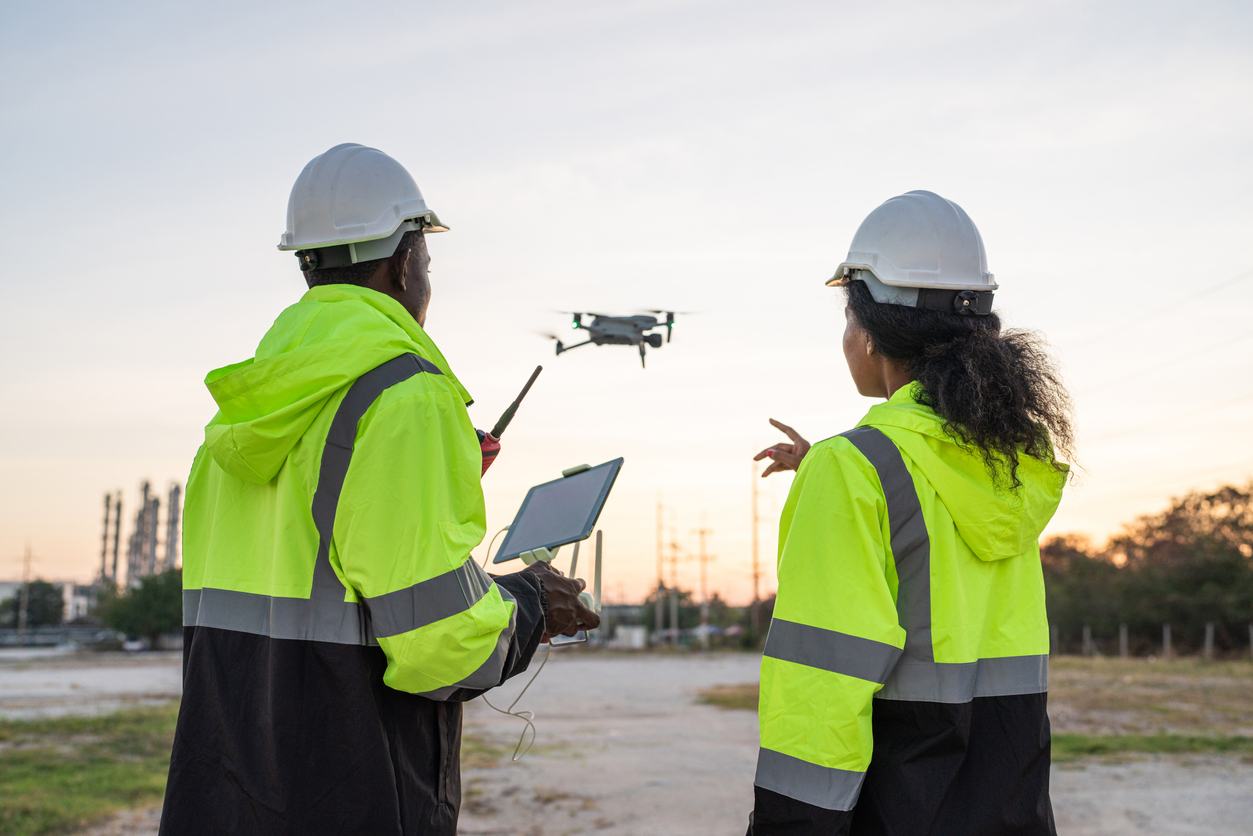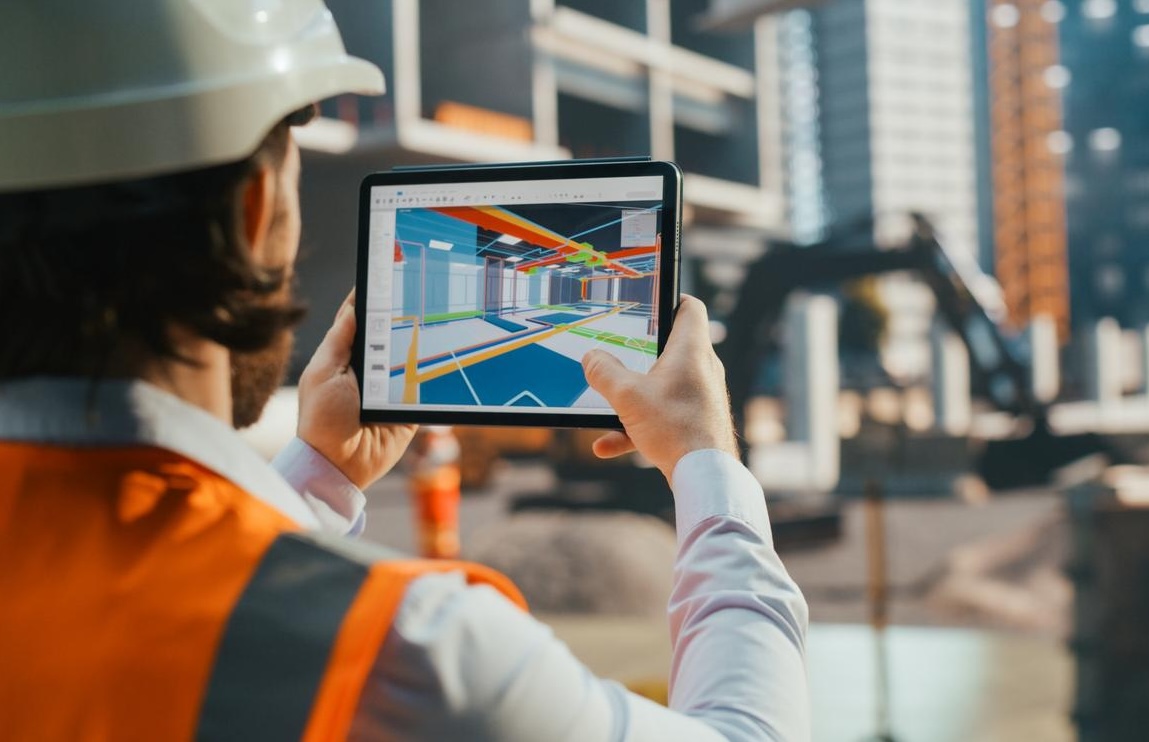The construction industry is standing at a crossroads. Demand for new workers is climbing, and nearly half a million will be needed in 2025 alone. Construction spending is expected to remain relatively flat, squeezed by rising material and labor costs. At the same time, technology is reshaping how projects are planned, managed, and built. Artificial intelligence, robotics, drones, and sustainable building practices are no longer experimental; they are becoming part of everyday job sites. This transformation is creating new opportunities and redefining traditional roles, but it also highlights a widening skills gap that the industry must address.
The real complexity in construction will be forged by the integration of AI - and how that begins to shape value chains and delivery methods. In the labor market, AI isn't going to replace jobs any time soon. AI will start to augment jobs and provide more bandwidth for employees - especially those focused in filling the expanding paperwork requirements in the industry.

What Do the Numbers Say About the Construction Job Market?
The U.S. construction industry requires about 439,000 additional workers in 2025 to meet demand. In 2026, that number rises to about 499,000 new workers.¹
Construction workers are explicitly listed among the job types projected to grow the most in absolute numbers over the next 5 years (2025-2030).³
The construction industry is projected to grow 4.7% from 2023 to 2033, adding about 380,000 jobs and reaching nearly 8.4 million workers by 2033. That’s a faster pace than the average across all industries.⁴
The construction workforce has grown noticeably younger in recent quarters, with the median age now under 42 for the first time since 2011. Consequently, the rate of retirements is expected to slow this year.¹
In construction firms employing 10 or more workers, AI implementation is significantly higher than the industry norm, with 64% of surveyed experts confirming its presence.²
The number of women in construction increased by 45% over the past 10 years.⁶
Related article: Construction Industry Labor Report 2025
In-Demand Construction Careers You May Have Never Heard Of

Broadly speaking I think looking ahead I would anticipate seeing more roles like drone operators, AI assisted estimations, and sustainability compliance officers become more common on-site jobs.

BIM Coordinator/Manager
This role involves creating and managing 3D models and data for projects. As Building Information Modeling (BIM) tools become more advanced, the demand for professionals skilled in this area is rising.
Top Skills Needed: 3D modeling, data integration, project coordination, and proficiency with BIM software.
Drone Operator/Analyst
Drone operators capture aerial imagery and perform site inspections, surveying, and progress monitoring. With construction sites increasingly relying on drone technology for efficiency and safety, demand for operators with specialized skills rose 45% between 2022 and 2023.⁷
Top Skills Needed: Aerial imagery capture, site inspection, surveying, and proficiency with drone technology.
Robotics Technician
Robotics technicians operate and maintain automated machinery like robotic bricklayers, excavators, and other construction robots. As automation rises, this role becomes more central. There are projected to be about 1,300 annual openings over the decade for electro-mechanical and mechatronics technologists and technicians, roles which include those working with robotics.⁸
Top Skills Needed: A blend of skills in robotics and automation, programming, mechanical and electrical maintenance, construction processes, data analysis, safety compliance, and strong problem-solving and collaboration abilities.
Sustainable Construction Specialist
These specialists focus on green building certifications, sourcing sustainable materials, energy efficiency, and minimizing environmental impact. Green construction roles are among the fastest-growing globally.⁹
Top Skills Needed: Knowledge of green building certifications, sustainable materials, energy efficiency strategies, and environmental impact reduction.
AI Architect/AI Engineer
AI Architects design intelligent systems to automate construction processes, improve efficiency, and develop machine learning models that predict project outcomes, optimize schedules, and reduce errors. As AI becomes integrated into many stages of construction projects, professionals in these roles are increasingly in demand.¹⁰
Top Skills Needed: Machine learning, predictive modeling, automation systems, and understanding of AI integration in project management.
Data Analyst
Data analysts in construction are integral to project planning, cost management, risk mitigation, and performance monitoring. They use data from sensors, project software, and analytics tools to improve the decision-making process, optimize schedules, reduce costs, and predict potential delays or safety issues. In the U.S., the big data analytics market in construction is projected to grow at a CAGR of 9.4% from 2025 to 2035, highlighting the increasing demand for skilled data analysts to support digital transformation.¹⁷
Top Skills Needed: Data analysis, project planning, cost management, risk mitigation, and performance monitoring.
Digital Twin Specialist
Digital twin specialists create and manage virtual replicas of physical assets, such as buildings or infrastructure, allowing teams to monitor performance in real time, optimize operations, and plan maintenance more effectively. The U.S. digital twin market is projected to grow from $3.90 billion in 2025 to $29.79 billion by 2032, representing a compound annual growth rate (CAGR) of 33.7% over the period.¹¹
Top Skills Needed: Creation and management of virtual replicas, real-time monitoring, and operational optimization.
3D Printing Technician
3D printing technicians operate and maintain 3D printers that produce building components or even entire structures. Their work enables modular construction, faster builds, and more precise material usage. With around 70% of builders interviewed by HUD preferring to hire 3D printing subcontractors, there is a rising need for trained 3D printing technicians. Either existing crews must learn the technology, or specialized teams will be required to manage the equipment, highlighting strong career opportunities in this field.¹⁸
Top Skills Needed: Operation and maintenance of 3D printers, modular construction techniques, 3D modeling, and material usage optimization.
Augmented Reality (AR) Specialist
An AR Specialist applies augmented reality technology to construction sites, overlaying digital models (such as BIM plans) onto the real-world view. This helps teams visualize complex structures, identify potential issues before they occur, and reduce errors, improving both efficiency and safety. 37% of construction companies plan to invest in AR technologies within the next two years, reflecting the industry's recognition of AR's potential to enhance project planning and execution.¹⁵
Top Skills Needed: Application of augmented reality technology, overlaying digital models, and issue identification.
Sustainability Compliance Officers
Sustainability compliance officers ensure construction projects meet environmental and social standards. They monitor resource use, track environmental impact, and implement strategies for energy efficiency, waste reduction, and sustainable materials, helping projects stay compliant and environmentally responsible.
Top Skills Needed: Environmental and social standards knowledge, resource use monitoring, and strategy implementation.
Trade Middle Manager Roles
“As technology and sustainability continue to reshape construction, I see new roles emerging around trade middle management,” says Kim O'Quinn, Corporate Vice President of Public and Community Relations at Mungo Homes. “Trades are beginning to recognize the importance of this layer, which helps bridge the gap between skilled workers on site and broader project management needs.”
Top Skills Needed: Team leadership, project and workflow management, data-driven decision-making, budgeting, safety compliance, and effective communication between technical and field teams.
Addressing the Construction Skills Gap: Why the Industry Needs New Talent
Tech helps with coordination and safety, but it doesn’t replace skilled labor. These jobs are not easily automated.

Aaron Shavel
Civil Engineer, Infrastructure Consultant, and Policy Fellow
Alliance for Innovation and InfrastructureThe U.S. construction industry faces a shortage of 40,000 technicians, driven by a widening skills gap.¹² Fewer workers are entering trade schools as more pursue four-year college degrees, leaving the industry with a critical shortage of skilled labor. At the same time, the rapid adoption of AI, robotics, drones, 3D printing, and sustainable building practices is creating unprecedented demand for tech-savvy workers.
Causes of the Skills Gap
Limited early exposure to trades: Many high school and college students are never exposed to construction careers, so fewer consider entering the trades. Career counseling and outreach programs are limited in many regions.
Perception of construction careers: Construction is often seen as physically demanding, “low-tech,” or lacking career growth opportunities. This discourages younger workers from pursuing the field.
High turnover and retention challenges: Construction jobs can be seasonal, project-based, or physically demanding, leading to higher turnover and fewer experienced workers staying long-term.
Inadequate professional development: Many companies lack structured programs for upskilling employees in new technology, safety standards, or sustainability practices. This leaves workers behind as roles evolve.
Digital literacy gap: Even skilled tradespeople may struggle with software, sensors, or digital planning tools, limiting their ability to fully leverage modern construction technology.
Aging workforce: For more experienced workers, new technologies can feel disruptive, and resistance to change may pose a significant barrier to their adoption on job sites.¹³
How to Attract and Retain Talent on the Construction Site of the Future
Education and Training Programs
The construction industry saw a 22% increase in apprenticeships over the past five years, with over 451,000 apprentices in 2024.¹⁴ Partnerships between companies, trade schools, and universities are helping integrate construction technology curricula into formal education. For example, vocational programs now offer courses in BIM modeling, AI-assisted project management, drone operation, and 3D printing, giving students hands-on experience with industry-standard tools. Apprenticeships and upskilling programs provide current workers with pathways to transition into tech-focused roles.
Mentorship and Knowledge Transfer
Cross-generational teams and mentorship initiatives enable experienced tradespeople to share practical expertise while learning new technology skills from younger colleagues.
Rebranding Construction Careers
To attract younger talent, companies are emphasizing technology, sustainability, and career growth opportunities in recruitment campaigns. Highlighting tech adoption and innovation helps counter the industry’s “low-tech” image.
Diversity and Inclusion
Modern construction roles are also designed to improve accessibility and equity. Programs aimed at increasing participation among women, veterans, and underrepresented groups ensure the workforce is not only skilled but diverse and adaptable.
Building the Future in Construction: Balancing Technology and Talent
To succeed, companies must balance investments in both people and technology. This includes creating mentorship programs, partnering with universities to integrate technology into curriculums, and leveraging digital channels to recruit the next generation of talent. As AI, robotics, drones, and sustainable practices become standard on job sites, firms that proactively train and upskill their workforce will gain a competitive edge. Feazel said, “Like all industries, AI is not replacing tradespeople but it is changing how we manage people and projects.” The future of construction will be defined by organizations that can blend human expertise with cutting-edge technology, ensuring projects are not only more efficient and innovative but also safer, more sustainable, and better equipped to meet the demands of tomorrow’s industry.
Frequently Asked Questions: Future of Construction
In today's market, contractors require a blend of traditional expertise and modern technical skills. This includes proficiency with new technologies like Building Information Modeling (BIM) software and drones, as well as soft skills such as communication, problem-solving, and project management.
No, AI and robotics are not replacing skilled labor but are instead changing how companies manage people and projects. Technology is creating new, high-demand careers like AI architects and robotics technicians, while traditional roles are evolving to become more tech-integrated.
The skills gap is due to several factors, including fewer workers entering the trades in favor of four-year college degrees, an aging workforce, and limited professional development to upskill existing employees. The rapid adoption of new technology has created an unprecedented demand for tech-savvy workers that the current labor force cannot meet.
The industry is using several strategies to attract new talent. This includes rebranding construction careers to highlight technology and sustainability, and increasing investments in apprenticeship and training programs. Companies are also creating cross-generational mentorship initiatives where experienced tradespeople can learn from younger, tech-savvy colleagues.
Technology is improving safety by enabling better project visualization and risk mitigation. For example, augmented reality (AR) helps teams identify potential issues before they occur. Additionally, data analysts use data from sensors and analytics tools to predict potential safety issues and optimize project schedules to reduce delays.
Sources
https://reports.weforum.org/docs/WEF_Future_of_Jobs_Report_2025.pdf
https://worldmetrics.org/upskilling-and-reskilling-in-the-drone-industry-statistics
https://www.bls.gov/ooh/architecture-and-engineering/electro-mechanical-technicians.htm
https://www.fortunebusinessinsights.com/u-s-digital-twin-market-107449
https://www.axios.com/local/dallas/2024/03/13/caterpillar-construction-equipment-technician-shortage
https://www.nahb.org/blog/2023/06/age-of-construction-workforce
https://www.apprenticeship.gov/apprenticeship-industries/construction
https://www.futuremarketinsights.com/reports/big-data-analytics-in-construction-market
Irena is an industry analyst and content specialist at Fixr.com, SolarReviews, and Howmuch.net, where she transforms complex data into clear insights that help readers make smarter financial decisions. She holds a degree in Economics and has been conducting personal finance research since 2018, bringing a strong analytical foundation to her work. Her insights have been featured in reputable outlets such as the Washington Examiner, Yahoo Finance, Fox40, and Forbes.
